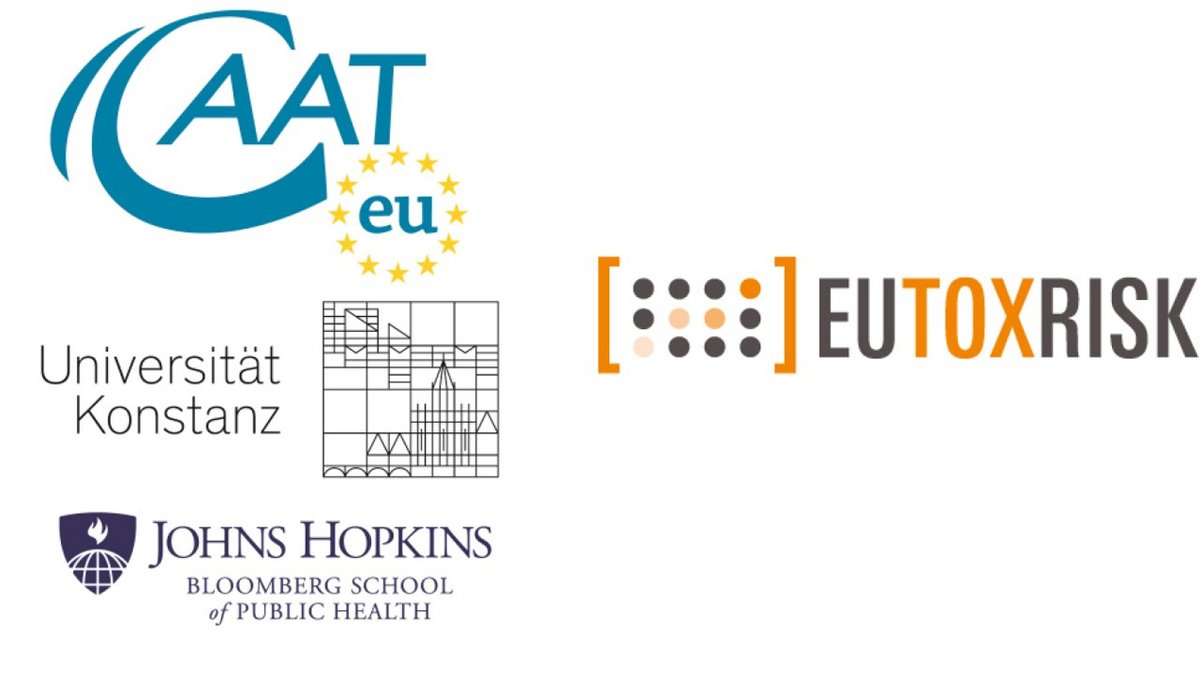New test strategies for developmental and reproductive toxicity (DART)
A think tank of the Center for Alternatives to Animal Testing - Europe (CAAT-Europe) and European Commissions Horizon 2020 large-scale framework project EU-ToxRisk

Time: May 15th to May 17th 2017
Venue: Cultural Center at the Cathedral in Konstanz
Outline: This workshop aims to bring together experts in the field of reproductive and developmental toxicology for extensive exchange of knowledge, definition of the status quo, identification of shortcomings and gaps in this field.
Developmental and reproduction toxicity (DART) belong to key areas of health concern (Basketter, 2012, Adler, 2011). DART is one of the large systemic toxicity areas not yet covered by accepted animal-free methods (Adler, 2011, Leist, 2014) remaining most animal intensive areas of regulatory toxicology, thus most challenging for the development of approaches alternative to animal testing. There are promising potential solutions for other large systemic toxicities, e.g. sensitization and mutagenicity, but there is a large unmet need for DART. The complexity of systemic toxicity of reproduction and developing organism over the whole reproductive cycle requiring repeated exposure to substances cannot be addressed with just one test. Non-animal attempts aiming at predictive DART implicate therefore a battery of approaches. The Horizon 2020 large-scale flagship project EUToxRisk21 (2016-2022) has the focus also on the non-animal DART, whereas hazard characterization within AOP and risk assessment in the frame of IATA are the main objectives. This workshop intends to bring experts in field of DART, including relevant EUToxRisk partners (e.g. BASF SE), to discuss functionality and fitness-for-purpose of promising non-animal DART approaches from academic, industrial and regulatory points of view.
Adler et al. Alternative (non-animal) methods for cosmetics testing: current status and future prospects-2010. Arch Toxicol. 2011 May; 85(5):367-485
Basketter et al. A roadmap for the development of alternative (non-animal) methods for systemic toxicity testing. ALTEX. 2012; 29(1):3-91.
Leist et al. Consensus report on the future of animal-free systemic toxicity testing. ALTEX. 2014; 31(3):341-56.
Specific foci and aims:
1. Battery principles/strategy:
a. Which tests how aligned
b. Add-on value of battery units
c. Redundancy vs necessity
d. Gaps still to be covered
2. Battery unit overview
a. Which in vivo endpoints covered/ to be covered
b. Readiness level
c. Industrial experience
3. Role of modern approaches, e.g. -omics
4. Role of ADME(T), e.g. within IATA, maternal toxicity, in vitro vs in vivo
